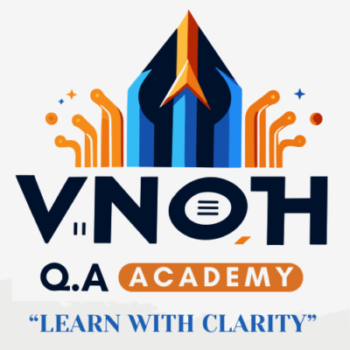Scrum Framework: #
Scrum is an Agile framework that facilitates iterative and incremental development. It emphasizes collaboration, accountability, and continuous improvement. Scrum is structured around specific roles, artifacts, and events designed to help teams deliver high-value products efficiently.
Key Components of Scrum #
Roles in Scrum
1. Product Owner:
– Responsible for maximizing the value of the product.
– Manages the Product Backlog, prioritizing items based on business value and stakeholder input.
– Ensures the team understands the Product Backlog items.
2. Scrum Master:
– Facilitates Scrum processes and removes impediments.
– Coaches the team on Scrum practices and principles.
– Acts as a servant leader for the Scrum Team.
3. Development Team:
– A self-organizing, cross-functional group responsible for delivering increments of the product.
– Collaborates to design, develop, test, and deliver the product.
Artifacts in Scrum #
1. Product Backlog:
– An ordered list of all features, functions, requirements, and enhancements needed for the product.
– Continuously refined and prioritized by the Product Owner.
2. Sprint Backlog:
– A list of tasks the Development Team commits to completing during a Sprint.
– Includes selected Product Backlog items and a plan for delivering the increment.
3. Increment:
– The sum of all completed Product Backlog items at the end of a Sprint.
– Must be in a usable condition and meet the Definition of Done (DoD).
4. Definition of Done (DoD):
– A shared understanding of what it means for work to be complete.
– Ensures consistency and quality in the delivered product.
Events in Scrum #
1. Sprint:
– A time-boxed iteration, usually 2-4 weeks long, where work is completed and a potentially shippable product increment is delivered.
– Fixed duration throughout the project.
2. Sprint Planning:
– A meeting at the start of each Sprint where the team discusses what work will be performed.
– The Product Owner presents the highest-priority items from the Product Backlog.
– The Development Team forecasts what they can deliver in the Sprint.
3. Daily Scrum:
– A 15-minute time-boxed meeting held daily for the Development Team to synchronize activities and plan the next 24 hours.
– Each team member answers three questions: What did I do yesterday? What will I do today? Are there any impediments?
4. Sprint Review:
– A meeting at the end of the Sprint where the Scrum Team and stakeholders inspect the increment and adapt the Product Backlog if needed.
– Demonstrates the work done and gathers feedback.
5. Sprint Retrospective:
– Held after the Sprint Review and before the next Sprint Planning.
– The team reflects on the past Sprint and identifies improvements to make in the next Sprint.
Example of Scrum Framework in Action #
Scenario: Development of a new e-commerce website.
Participants:
– Product Owner: Eva
– Scrum Master: Dave
– Development Team: Alice (Frontend Developer), Bob (Backend Developer), Carol (QA Engineer)
1. Product Backlog Creation
Eva creates a Product Backlog with items such as:
– User registration and login
– Product search and filtering
– Shopping cart functionality
– Order checkout process
– Product reviews and ratings
2. Sprint Planning
The team decides on a 2-week Sprint.
Eva presents the top priority items from the Product Backlog:
– User registration and login
– Basic product search
The team discusses and estimates the work, breaking it down into tasks:
– User registration and login: Database setup, frontend form, backend authentication
– Basic product search: Search algorithm, UI design, integration with database
The tasks are added to the Sprint Backlog.
3. Daily Scrum
Each day, the team meets for 15 minutes:
– Alice: “Yesterday, I completed the frontend form for registration. Today, I’ll start on the search UI. No impediments.”
– Bob: “Yesterday, I set up the database. Today, I’ll work on backend authentication. No impediments.”
– Carol: “Yesterday, I wrote test cases for registration. Today, I’ll start testing the database integration. No impediments.”
4. Sprint Review
At the end of the Sprint, the team demonstrates the completed user registration and basic product search functionalities to stakeholders.
Eva gathers feedback from stakeholders, noting that the search functionality needs an advanced filter option.
5. Sprint Retrospective
The team reflects on the Sprint:
– Alice: “We had smooth communication, but the frontend form took longer than expected. Next time, we should allocate more time for UI tasks.”
– Bob: “Backend setup went well, but we need better documentation for database configuration.”
– Carol: “Testing was efficient, but we should involve the team earlier in the planning phase.”
The team agrees to improve UI time estimation and documentation for the next Sprint.
Summary #
| Artifact | Description |
| Product Backlog | User registration and login, Product search and filtering, Shopping cart functionality, Order checkout process, Product reviews and ratings |
| Sprint Backlog | Tasks for user registration and login, Basic product search |
| Increment | Completed user registration and basic product search functionalities |
| Event | Description |
| Sprint Planning | Deciding on user registration and basic product search tasks for the Sprint |
| Daily Scrum | Synchronizing daily tasks and addressing impediments |
| Sprint Review | Demonstrating completed functionalities to stakeholders and gathering feedback |
| Sprint Retrospective | Reflecting on the Sprint and identifying improvements for the next Sprint |
Conclusion #
Scrum is a powerful framework for managing complex projects through iterative and incremental processes. It fosters collaboration, transparency, and continuous improvement, helping teams deliver high-value products. The example of developing an e-commerce website demonstrates how Scrum roles, artifacts, and events work together to facilitate efficient project management and delivery.



